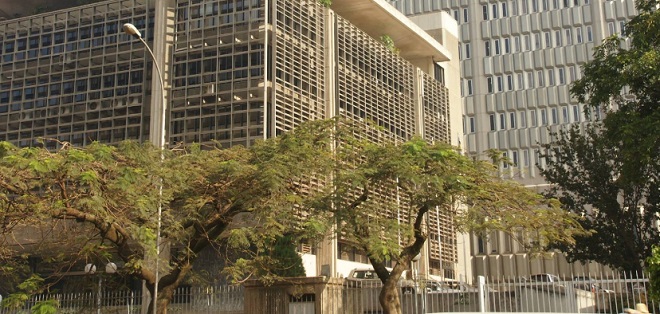S&P keeps Uganda at B/B credit rating, Central bank governor happy over assessment

Increased investment in the infrastructure projects has helped Uganda to maintain its credit rating, according to the latest Standards and Poor report which maintained the country’s B/B rating.
That is a mid-level assessment which is way off the most creditworthy AAA rating of almost zero risk of default and above the CCC which indicates higher risk.
Reacting to the assessment, Bank of Uganda Governor Emmanuel Tumusiime- Mutebile said he was happy that, once again, international analysts are expressing confidence in the medium term prospects for the Ugandan economy on the basis of our track record of maintaining macroeconomic stability and sustainable debt levels amid an uncertain global economic environment.
This is the third time in a row that the international credit rating agency is describing Uganda’s credit worthiness as stable. It awarded the same rating in July 2015 and January this year. The stable rating signals a favourable macroeconomic outlook for prospective investors. The latest assessment by the US-based financial research firm was released on July 08.
“ The stable outlook balances the risks from a temporary worsening in the government’s fiscal position caused by spending on public-sector infrastructure projects, against our expectation that the country’s fiscal and external metrics will improve once the projects are completed, triggering an increase in the productive capacity of the economy.”
The firm said the public-sector-led hydropower projects -Karuma and Isimba-now under construction are expected to boost power supply in the medium term, thereby helping growth prospects.
Uganda registered its recent best ever credit rating in 2013 with a B+ at the time oil prospects were high and oil priced at more than $100 per barrel.
Currently, Uganda’s government debt stands at slightly more than $7.2billion.
However, the government slowed its investment in the oil sector due to low prices, now averaging less than $50 per barrel and government delays in issuing production licences and concluding oil infrastructure network agreements. Now, the country is looking at oil production to start by 2020.
The new rating comes at the time Uganda has just emerged from a general election, with President Museveni re-elected with over 60% under his National Resistance Movement (NRM) against his former ally Amama Mbabazi (independent candidate) and a longtime opposition leader Dr. Kizza Besigye.
The international credit rating assessed several factors including per capita Gross Domestic Product (GDP) growth projections, level of public debt as a percentage of GDP, current account imbalance as a percentage of GDP, level of international reserves, and inflation outlook.
Since assessments of these variables in Uganda has been judged as stable, an indication that the economy is healthy, investor confidence is expected to remain high, both domestic and foreign.
The stable rating could also impact the local money markets since it is usually a factor in determining the interest rate at which the government can borrow on the international capital market. The stable outlook means Uganda’s the risk premium will be relatively lower and when it issues bonds, they are expected to easily attract investors. The government has already indicated its intention to borrow more on the international market in a bit to free up more resources for domestic borrowers.
Though the increased spending in various infrastructure projects, combined with the February elections, led to a widening in the government deficit to 6% of the Gross Domestic Product in the fiscal year ending June 30 compared with 4% in the previous year, the rating firm stated that economic growth remains strong, inflation pressures receding, the shilling stable, and the government’s domestic financing costs declining.
The analysts believe the country’s general government debt will increase, and average 32% of GDP over 2016-2019, to be financed by a combination of borrowing from bi- and multilateral lenders and the drawing down of fiscal assets, including the government’s oil revenue account at the central bank.
Currently, Uganda’s government debt stands at slightly more than $7.2billion.
The credit rating firm also said while they expect the Ugandan economy to grow by at least 5% per year from 2016, they forecast that the per capita GDP will rise more modestly because the population is increasing by an average of 3% per year, with the GDP per capita expected to remain below $1,000 over the next three years.
****
editor@independent.co.ug
 The Independent Uganda: You get the Truth we Pay the Price
The Independent Uganda: You get the Truth we Pay the Price


